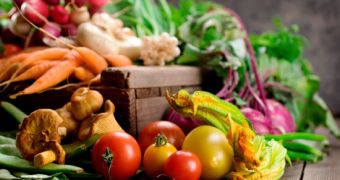When it comes to promoting green-oriented behavior and healthy life choices amongst children in their early school years, scientific reasoning such as “the chemical compound in X vegetable is good for dealing with Y health condition” more often than not fails to yield noteworthy results.
More so when kids are left to enjoy their lunches in school cafeterias, where the absence of parental supervision often leads to their choosing pizza and other similar snacks over healthier options such as fruits and salads.
However, one recent study indicates that simply coming up with funkier names for vegetables can get children to significantly change their dietary habits, and thus promote a healthier life-style amongst them.
More precisely, as Eureka! Alert informs us, one team of researchers and behavioral scientists presented 147 students, age 8-11, with food choices such as “Power Punch Broccoli” and “X-Ray Vision Carrots.”
Apparently, these new names succeeded in getting the children to not just notice, but also eat said vegetables. Interestingly enough, these superhero-inspired labels drew more attention than the label “Food of the Day” did.
Thus, once “X-Ray Vision Carrots” made their way into school lunchroom menus, 66% of them were eaten, as opposed to just 32% when the label “Food of the Day” was brought forth.
Commenting of these findings, Brian Wansink from the Dyson School of Applied Economics and Management at Cornell University made a case of how, “This research suggests that schools have a low-cost or even no-cost solution to induce children to consume more nutritious foods.”
He further elaborated on this issue as follows: “These results demonstrate that using attractive names for healthy foods increases kid's selection and consumption of these foods and that an attractive name intervention is robust, effective and scalable at little or no cost.”
Should we also take into consideration one past study which indicated that color-coding foods and dishes leads to adults' making healthier choices, it seems to us that green-oriented behavior as far as diet goes is well within reach, provided that restaurants and cafeterias agree to tap into the psychology of both grown-ups and children.

 14 DAY TRIAL //
14 DAY TRIAL //